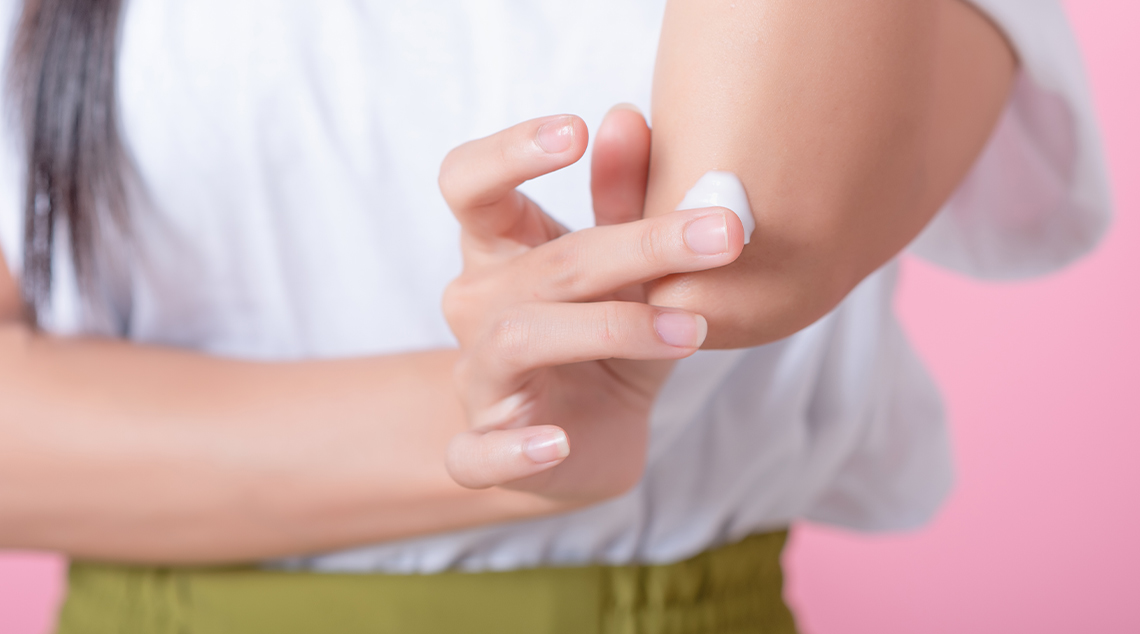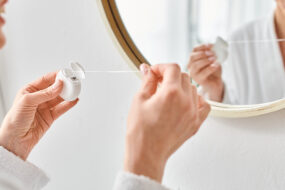Bumpy skin on your arms? Here’s how to banish keratosis
Commonly known as ‘chicken skin’, the common skin condition keratosis pilaris is harmless – but here’s some help to keep the bumps at bay.
If you’ve ever wondered why your skin seems to be a little bumpy in some areas, it could be due to keratosis pilaris.
KP as it’s often referred to, affects about 40 per cent of adults and about 50 to 80 per cent of teenagers.
Given its prevalence, we enlisted the help of dermatologists to break down exactly how to treat keratosis pilaris, and keep the bumps at bay.
What is keratosis pilaris?
Colloquially known as “chicken skin’’ due to its appearance, keratosis pilaris is a common but harmless skin condition.
“Keratosis pilaris causes rough, bumpy spots most commonly on the upper arms, but in some cases also the thighs and/or face,” dermatologist and Complete Skin Specialists director Dr Cara McDonald says.
The telltale signs of KP are red bumps that are caused by “a plug of skin cells which fail to clear properly out of the hair follicle”.
It is more common when the environment is quite dry, particularly in winter when humidity levels are lower.
Who does keratosis pilaris affect?
Keratosis pilaris is genetic.
“Those with a family history are more at risk, but it is a very common condition,” Dr McDonald says.
“In the majority of cases, it tends to improve with age but can become more or less prominent at times.”
Interestingly, Dr McDonald adds that there are some emerging reports of KP clearing after treating systemic inflammation and addressing leaky gut but, at this stage, the studies are still inconclusive.
What are the treatments for keratosis pilaris?
Keratosis pilaris is harmless, but there may be a desire to improve its appearance.
The important thing is to keep the skin moisturised, consultant dermatologist Dr Niyati Sharma says.
“Look for moisturisers that contain lactic acid and salicylic acid which can help to remove some of that dry spots on the surface of the skin,” Dr Sharma, founder of Inside Out Dermatology, says.
She also suggests using a loofah to gently exfoliate the skin, and getting into a consistent daily routine of moisturising and exfoliating the skin to improve the appearance of KP.
Dr Sharma says there’s also the option of a compounding cream, which is a treatment that requires a prescription from a dermatologist.
And what if you want to go beyond a basic exfoliating and moisturising routine?
Dr McDonald says other treatments include using topical retinoids (vitamin A) and vitamin D creams and laser.
“Vascular laser or IPL might be used to address the redness, especially on the face,” Dr McDonald says.
“Effective laser treatment though requires multiple sessions with quite aggressive settings by an experienced doctor in order to see any significant improvement.”
It’s generally the case that keratosis pilaris will improve with age, but sometimes it may require expert intervention if you think it’s worsening.
“If your KP is getting worse and extending across your body, it’s a good idea to make sure you have it looked at by a dermatologist,” Dr Sharma says.
More on looking after your skin:
- 10 skincare ingredients for your best skin yet
- Back to basics: Is skin fasting the reset your beauty routine needs?
- How to eat your way to healthier skin
- 5 reasons your skin may be peeling
Written by Tania Gomez.





